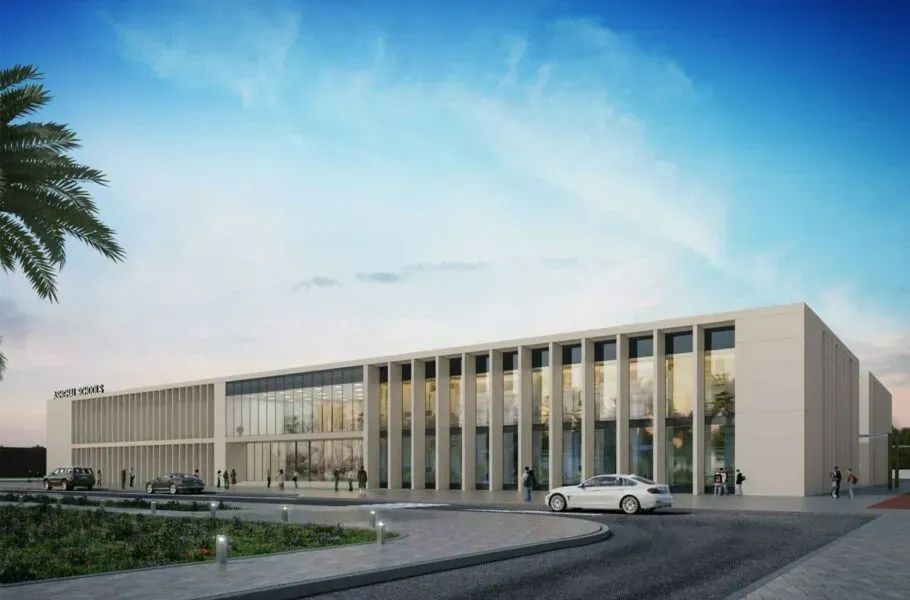Qatar 3D-printed schools are at the forefront of the nation’s ambitious transformation of educational infrastructure. As part of a groundbreaking initiative, the country is embracing 3D printing technology to construct innovative learning environments that align with Qatar National Vision 2030. By integrating sustainable construction methods and eco-friendly architecture into the design, these advanced facilities aim not only to provide quality education but also to minimize environmental impact. The project involves the development of 14 public schools, with two being constructed through cutting-edge 3D printing, showcasing a commitment to modern educational infrastructure in Qatar. Such strides in architectural innovation not only underscore Qatar’s commitment to sustainability but also set a precedent for future construction practices worldwide.
The initiative to build educational institutions using additive manufacturing signifies a paradigm shift in Qatar’s approach to developing its school facilities. Dubbed the 3D-printed schools project, this revolutionary venture represents a fusion of modern technology with the urgency for educational advancement. With an eye on boosting both accessibility and quality of education, the project aims to integrate smart design with sustainable practices in construction. By leveraging innovative techniques, Qatar is redefining its educational landscape, making it a pioneer in the use of environmentally-conscious building strategies. This shift not only enhances the learning environments but also supports broader goals for sustainable urban development.
The Vision Behind Qatar’s 3D-Printed Schools
Qatar’s ambition to enhance its educational infrastructure aligns seamlessly with the Qatar National Vision 2030, which seeks to foster a society based on innovation and sustainable growth. Through the initiative to create 3D-printed schools, the country is making a significant investment in its future, ensuring that its educational facilities are not only functional but also pioneering in their construction methodologies. This project highlights Qatar’s commitment to integrating advanced technologies, such as 3D printing, into its public sector initiatives.
The decision to construct 14 public schools using 3D printing technology demonstrates a holistic approach that prioritizes quality education and sustainable practices. This ambitious undertaking aims to provide students with modern learning environments while reducing the environmental impact commonly associated with traditional construction methods. By showcasing eco-friendly architecture through these 3D-printed schools, Qatar is on track to become a global leader in innovative educational infrastructure.
Innovative Technology Driving Construction
At the heart of Qatar’s 3D-printed school project is the remarkable technology spearheaded by UCC Holding in partnership with COBOD. The use of advanced BOD2 printers, which are uniquely tailored for large-scale construction, illustrates the potential of 3D printing technology in transforming traditional construction techniques. These printers not only expedite the building process but also offer unparalleled precision, enabling architects to explore complex geometries that enhance the aesthetic appeal of the schools.
The innovative application of 3D printing technology significantly reduces construction waste, a critical factor in promoting sustainable development. By minimizing material use and labor costs, this project exemplifies eco-friendly architecture. Moreover, the ability to rapidly prototype and improve designs means that each school can be optimized for better performance and lower energy consumption, making them exemplary models of sustainable construction in the modern educational landscape.
Sustainable Construction and Environmental Impact
Qatar’s 3D-printed schools are a testament to the intersection of sustainable construction and innovative technology. The implementation of 3D printing not only decreases material waste substantially—by as much as 60%—but also lowers the carbon footprint associated with construction projects. By harnessing a specialized concrete mix that can withstand high temperatures, the project ensures the longevity and structural integrity of the buildings, while adhering to environmentally-friendly practices.
This approach exemplifies the principles of eco-friendly architecture, focusing on energy efficiency and resource conservation. As these schools are designed to endure the harsh desert climate, they serve as a model for how educational infrastructure can be constructed with sustainability in mind. This not only benefits the local environment but also aligns with the broader objectives set out in Qatar National Vision 2030, which advocates for projects that prioritize ecological sustainability.
The Unique Architectural Design of 3D-Printed Schools
The architectural design of Qatar’s 3D-printed schools is nothing short of revolutionary. Inspired by the natural formations of the desert, the schools feature undulating walls that evoke the majesty of sand dunes. This innovative design is a clear departure from traditional building aesthetics and showcases the unparalleled capabilities of 3D printing technology, allowing architects to create complex, organic shapes that were previously thought impossible.
Incorporating these unique design elements serves not only an aesthetic purpose but also enhances the functionality of the buildings. The flow of natural light and air circulation can be optimized through such unique designs, ultimately contributing to a healthier environment for students and staff alike. By merging artistic creativity with modern construction methods, Qatar sets a new standard for educational buildings that is both beautiful and functional.
The Role of 3D Printing in Education
The introduction of 3D-printed schools has the potential to revolutionize the educational experience in Qatar. As these schools are equipped with state-of-the-art facilities and futuristic designs, they will provide a conducive environment for learning that stimulates creativity and innovation among students. This initiative represents a forward-thinking approach, where the construction industry collaborates with educational stakeholders to create spaces that foster academic excellence.
Moreover, the technology used in these constructions can be integrated into the curriculum, offering students hands-on experience in emerging construction techniques. Schools can utilize the 3D printing process as a teaching tool, preparing a new generation of architects and engineers who are proficient in the latest innovations and sustainable practices. This synergy between construction and education not only enriches students’ learning experiences but also aligns with Qatar’s aspirations of becoming a hub for educational innovation.
Collaboration and Expertise in Construction
The collaborative effort between UCC Holding and COBOD not only exemplifies the importance of partnerships in large-scale projects but also showcases the wealth of expertise required to successfully implement cutting-edge construction technologies. Each partner brings valuable knowledge to the table, with UCC Holding adept in local conditions and regulations, while COBOD provides specialized expertise in 3D printing construction techniques. This synergy is pivotal for the project’s success.
Through meticulous planning and teamwork, this project is setting a benchmark for future construction initiatives in Qatar and beyond. Such collaboration not only ensures the technological aspects of construction are executed flawlessly, but also adheres to sustainability principles, ultimately contributing to the overarching goals of Qatar National Vision 2030.
Strategic Planning for Educational Infrastructure
Strategically planning for educational infrastructure is vital for any nation aiming to nurture its future leaders. Qatar’s commitment to building 3D-printed schools reflects a long-term vision for creating an adaptive and innovative educational landscape. By investing in state-of-the-art facilities, Qatar is ensuring that its educational environment meets the evolving needs of students and educators in a rapidly changing world.
The thoughtful integration of technology in education is critical, as it prepares students for the challenges they will face in the future workforce. 3D-printed schools are designed not only to accommodate current educational demands but also to be adaptable for future advancements in teaching methods and technologies. This foresight in planning paves the way for continuous improvement in educational infrastructure, promoting a culture of lifelong learning.
Future Milestones in Educational Development
Looking ahead, the establishment of Qatar’s 3D-printed schools marks only the beginning of an exciting phase in educational development. With completion projected for 2025, these schools are expected to serve as model institutions for future projects beyond Qatar’s borders. The lessons learned from this large-scale initiative can provide valuable insights and inspire similar projects in other regions, emphasizing the potential for global collaboration.
As the world increasingly prioritizes sustainable practices and innovative solutions, Qatar’s pioneering endeavors in 3D-printed educational infrastructure signify a shift towards more responsible and efficient construction methodologies. This project not only aids in meeting immediate educational needs but also sets a precedent for future efforts that align with environmental sustainability and technological advancement.
Key Takeaways from Qatar’s 3D-Printed Schools Project
The key takeaways from Qatar’s initiative to construct 3D-printed schools illustrate a clear alignment with global trends in sustainable construction and innovation in education. As the project progresses, it stands as an example of how emerging technologies and strategic thinking can combine to address contemporary challenges. The benefits extend beyond simply providing classroom space, representing a transformative approach to educational infrastructure.
Equipped with modern technology and innovative architectural design, these schools are poised to inspire future generations of learners and educators alike. As Qatar continues to push the boundaries of what’s possible in educational infrastructure, it simultaneously strengthens its position on the global stage as a leader in sustainable development and innovative construction practices.
Frequently Asked Questions
What are Qatar’s 3D-printed schools and their significance for educational infrastructure?
Qatar’s 3D-printed schools are part of a groundbreaking initiative to enhance educational infrastructure in the country. Launched by UCC Holding and the Public Works Authority, this project involves constructing 14 public schools, two of which will utilize innovative 3D printing technology. By embracing this sustainable construction method, Qatar aims to lead in eco-friendly architecture and support Qatar National Vision 2030, which prioritizes innovation and development in various sectors.
How does 3D printing technology contribute to sustainable construction in Qatar?
3D printing technology significantly enhances sustainable construction practices in Qatar by minimizing material waste by up to 60% compared to traditional building methods. This technology also reduces labor requirements and accelerates construction timelines, thereby decreasing overall energy consumption and emissions. The design capabilities of 3D printing allow for the creation of complex, curved structures that are both aesthetically pleasing and environmentally friendly, aligning with Qatar’s commitment to eco-friendly architecture.
What makes Qatar’s approach to 3D-printed schools a model for future educational infrastructure?
Qatar’s approach to 3D-printed schools sets a new standard for future educational infrastructure by integrating advanced construction techniques with innovative design. The schools feature unique dune-inspired architectures that are only possible through 3D printing. This project not only prioritizes sustainability but also serves as a pioneering model for other countries looking to enhance their educational facilities using modern technologies, as emphasized in Qatar National Vision 2030.
What role does UCC Holding play in Qatar’s 3D-printed schools project?
UCC Holding is at the forefront of Qatar’s 3D-printed schools project, collaborating with the Public Works Authority and specialists like COBOD, a leader in 3D construction printing. UCC is responsible for managing the construction of the two 3D-printed schools, ensuring the implementation of advanced technology and sustainable practices that align with Qatar’s goals for educational infrastructure and eco-friendly architecture.
What is the expected completion date for Qatar’s 3D-printed schools?
The 3D-printed schools in Qatar are slated for completion by the end of 2025. This timeline reflects the project’s scale and ambition, showcasing advancements in construction technology and Qatar’s commitment to innovative educational infrastructure as highlighted in Qatar National Vision 2030.
How does the design of Qatar’s 3D-printed schools reflect the local environment?
The design of Qatar’s 3D-printed schools draws inspiration from the local desert environment, featuring wavy walls that mimic the natural formations of sand dunes. This architectural approach highlights the capabilities of 3D printing technology to create intricate and sustainable designs, emphasizing the blend of innovative construction methods with environmentally responsive architecture.
Why is 3D printing considered a key to eco-friendly architecture in Qatar?
3D printing is considered a key to eco-friendly architecture in Qatar due to its ability to significantly reduce material waste, labor costs, and environmental impact compared to conventional building practices. The technology facilitates the creation of complex and aesthetically unique structures while contributing to lower emissions and energy consumption, aligning with the country’s goals for sustainability under Qatar National Vision 2030.
What unique features do the 3D-printed schools in Qatar possess?
The 3D-printed schools in Qatar feature unique architectural elements such as curved, dune-inspired walls that are made possible through advanced 3D printing technology. Each school will be a two-story building with state-of-the-art design tailored for the region’s climate, alongside a special concrete mix developed for effective curing in high temperatures, highlighting a blend of innovation and environmental adaptation.
| Key Points | Details |
|---|---|
| Initiative Overview | Qatar is launching one of the world’s largest 3D-printed construction projects to build 14 public schools. |
| Collaboration | UCC Holding and the Public Works Authority (Ashghal) are leading the initiative, partnering with COBOD for 3D printing technology. |
| Project Scale | Each school is a two-story structure covering 215,000 square feet, built on 328-by-328-foot plots, totaling 430,000 square feet. |
| Sustainable Practices | 3D printing technology reduces material waste by up to 60% and shortens construction timelines, promoting sustainability. |
| Design Inspiration | The school design reflects Qatar’s desert formations with wavy walls resembling dunes. |
| Completion Timeline | The schools are expected to be completed by the end of 2025. |
Summary
Qatar 3D-printed schools represent a pioneering effort in revolutionizing educational infrastructure through advanced construction technologies. This initiative not only aims to provide sustainable and innovative school designs but also aligns with Qatar National Vision 2030. By employing state-of-the-art 3D printing methods, Qatar is setting a global benchmark in the education sector, showcasing how technology can lead to eco-friendly and efficient building practices. The project aims to inspire other countries to adopt modern construction methodologies that prioritize sustainability.



